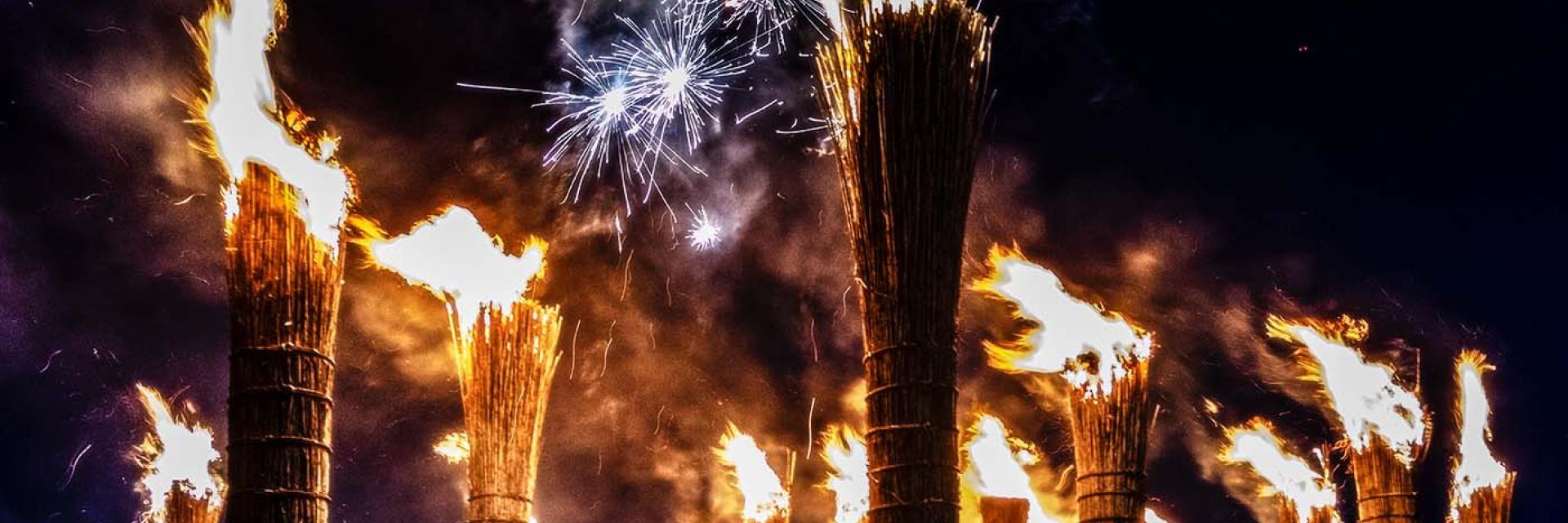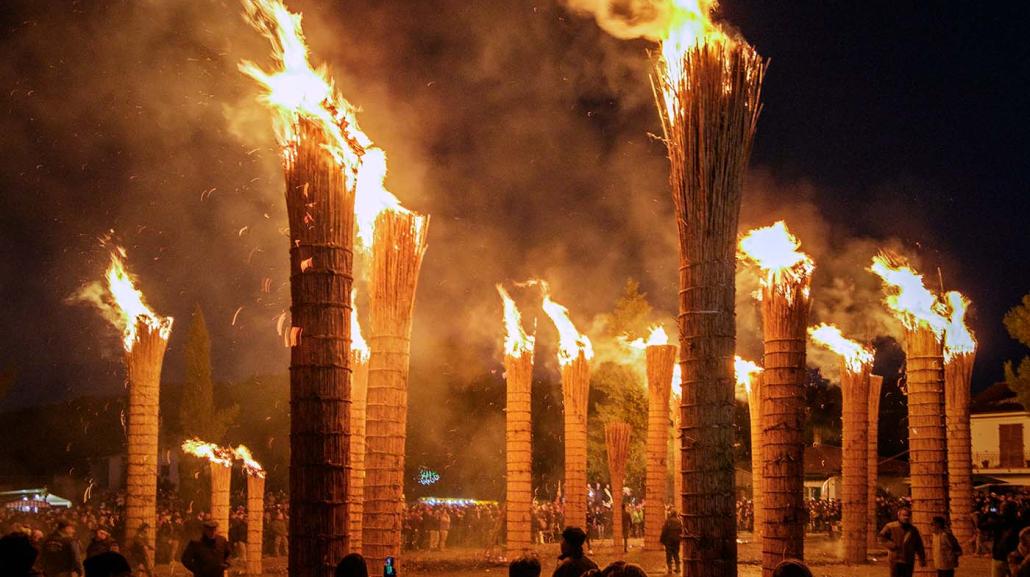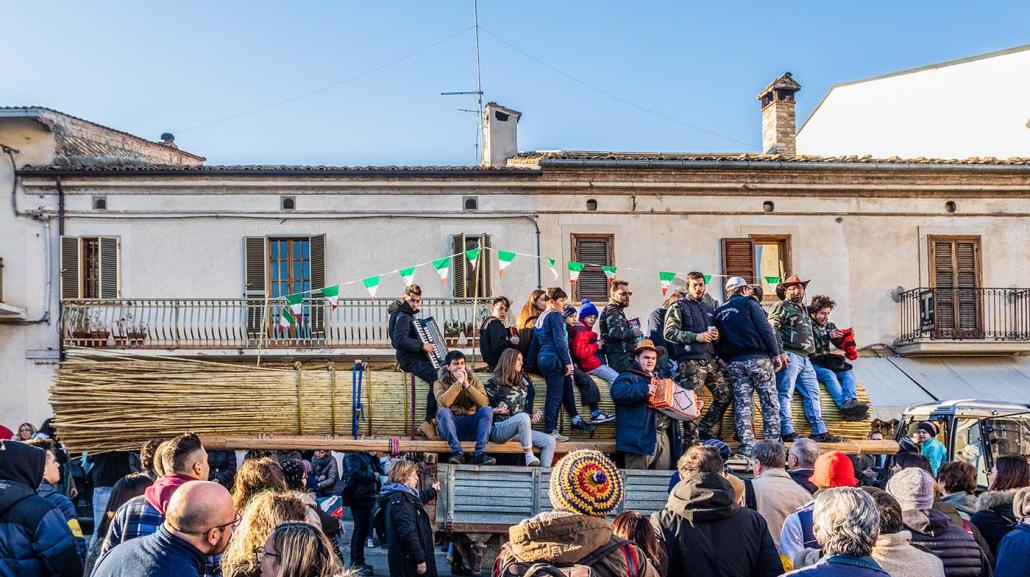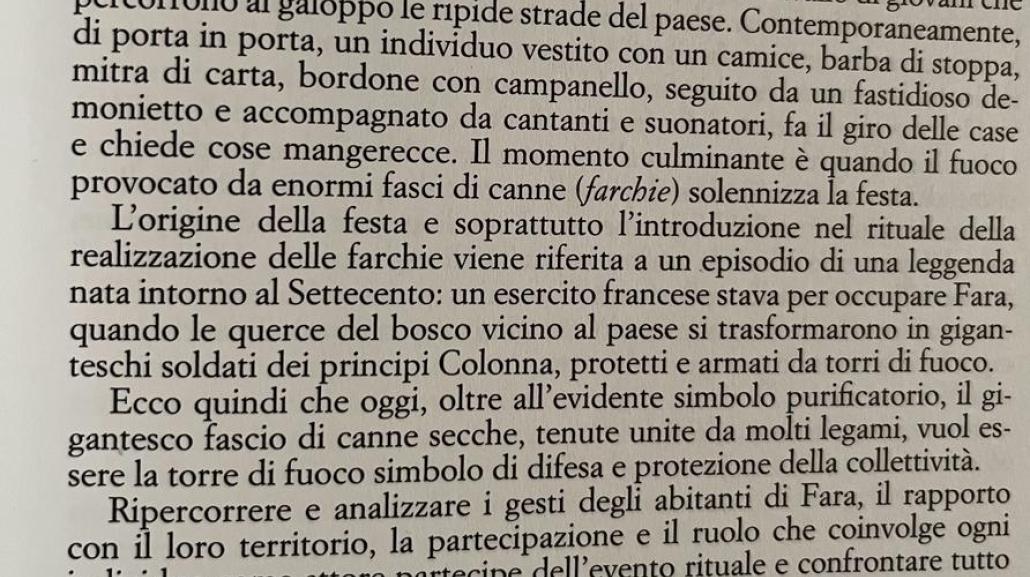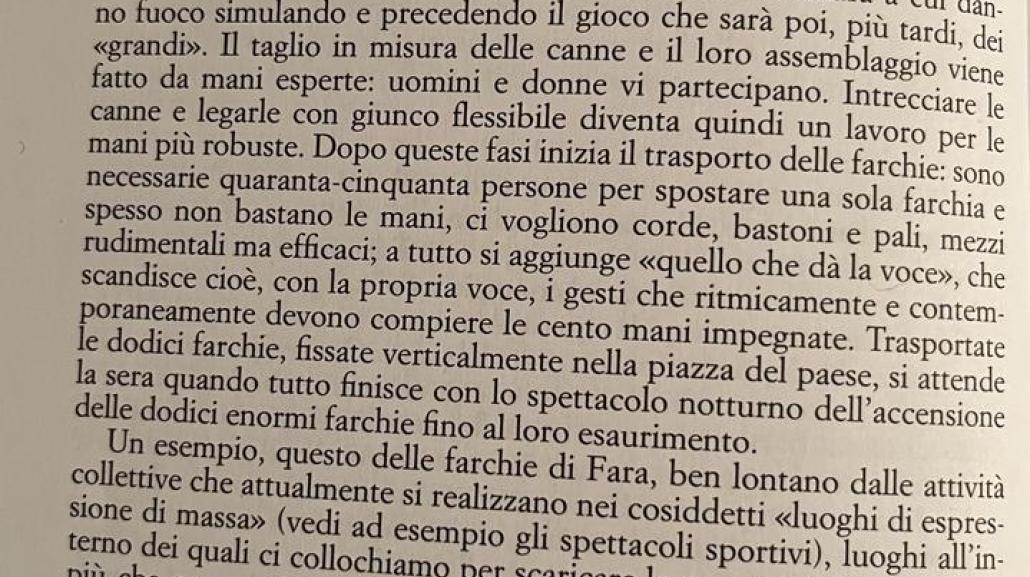Fara Filiorum Petri
In the picturesque valley of the Foro River, in an ancient fortified village on a promontory between the Vesole and San Martino tributaries, a magical night is repeated every year: the Festival of the Farchie. In this medieval village at the foot of the Maiella, whose name recalls its Lombard origins, the community gathers around the fire to celebrate and remember. The light of the fire dispels the darkness of winter and fills the time, slowed by the earth's rest, with vitality. This rite, repeated with gestures, songs, and memories, renews the collective memory with a mix of myth, history, traditions, superstitions, beliefs, and legends.
The Fire as the Protagonist
The Festival of the Farchie, celebrated on January 16th in honor of Saint Anthony the Abbot, is similar to other purification rites and fertility rituals for the earth found throughout Abruzzo and Italy. The central symbol of the celebration, fire, heralds the regeneration of nature, burns away the old year, and welcomes the new one. This ritual is connected to the fight against evil, represented by the devil who tempted the ascetic saint, who is venerated for his healing and protective powers.
Healing of the Pilgrims
The church of Saint Anthony, located outside the urban center of Fara, allowed the isolation of sick pilgrims to prevent contagion. These individuals often healed simply by changing their diet. The Antonine monks cared for the sick by applying pork fat to their skin, which is why the image of the saint is often depicted with a pig at his feet, whose meat contributed to a faster recovery. Saint Anthony is considered the protector of all animals and the fields.
Saint Anthony's Piglet
From this tradition comes the custom of raising the "piglet of Saint Anthony," marked with a red ribbon. The pig was sacrificed in January, and its meat was transformed into sausages, hams, and coppa, ensuring the family's economic abundance. This practice remains alive in the mountain communities of Abruzzo, where the pig slaughter is still an important celebration.
A Competition Among Districts
The Festival of the Farchie involves all the communities of Fara Filiorum Petri in a friendly competition. Each district begins working at the start of the year, collecting reeds and preparing them to form large bundles called farchie. The districts compete to obtain the best reeds, and the construction of the farchie becomes a community event filled with joy and camaraderie.
A Reed Totem Called Farchia
The farchia is a cylinder of reeds about 8 meters tall and 80 centimeters in diameter, tied with red willow branches. It symbolizes the vitality and strength of the community. The myth of its origin tells that Saint Anthony turned oaks into flames to drive away French invaders in 1799, protecting the community.
Saint Anthony's Bread and the Blessing of the Animals
On January 17th, during the Solemn Mass, bread and animals are blessed. The bread is distributed among families, and the leftovers are added to the animals' rations, while the coals from the fire are taken home to kindle the hearth.
Saint Anthony: A Shared Celebration
The tradition of the Festival of the Farchie is renewed in other towns of Abruzzo Marrucino: in Roccamontepiano in the district of Terranova with street theater performances and burning bundles of reeds; in Pretoro and Casalincontrada with parades of wagons and allegorical representations of the saint's life.
In San Martino sulla Marrucina, the local devotion to Saint Anthony the Abbot led to the construction of a smaller chapel called Sant'Antoniuccio near the original chapel. According to Mauro Di Federico, president of the Corporation Sancti Martini: “The tradition of fire has always coexisted with the cult of Saint Anthony the Abbot. The fires lit in his honor, piles of wood stacked together, were blessed, and each person took home coals to mark their domestic animals and protect them from diseases and calamities. In 1892, the tradition of the farchie was already strong in the town, as evidenced by the memoirs of the priest Giuseppe Di Paolo. The various districts prepared the pyres, numbering 13, to erect them on the plain that now occupies the communal park 'La Maielletta'. The priest used to leave the fortified village to bless them, and the population, after lighting them, celebrated with feasts. The tradition remained strong until the 1930s and survived World War II only in some districts. In recent decades, a group of families has kept the tradition alive. But how did we go from blessed fires to farchie in San Martino sulla Marrucina? This is still a subject of study, but there are several old documents that could clarify the origin.”
Fuente: https://abruzzomarrucino.it/consigli/il-fuoco-delle-farchie-brucia-lanno-vecchio-19282
Recommended Reading:
- Di Nola Alfonso Maria, *Gli aspetti magico-religiosi di una cultura subalterna in Italia*, 1976
- Lucio Biancatelli, Gino Primavera, *La cucina della Maiella. Storia e ricette*, ORME | TARKA, 2014
- *S. Antonio Abate e le Farchie en Fara Filiorum Petri*, edited by the Municipal Administration of Fara Filiorum Petri with the contribution of the Province of Chieti, with a preface by Giuliano Davide Di Menna. This work derives from the observation of the festival between 1993 and 2000, along with interviews with people from Fara.
- Antonio Corrado, Serena Di Fulvio, Sandro D’Orazio, *Dalla terra al fuoco. Viaggio tra sacro e profano a Fara Filiorum Petri Paese delle farchie e del miracolo di Sant’Antonio Abate*, D’Abruzzo Libri, Edizioni Menabò, 2013
- *Feste e Riti en Abruzzo* from Illustrazione Abruzzese – Asterischi n.2 October – November 1984, Venerio Luigi De Giorgi, Publisher
- *Le feste di Sant’Antonio in Abruzzo: rito dei fuochi tra devozione e tradizione* by Loredana Lombardo on Abruzzoweb, January 17, 2019

